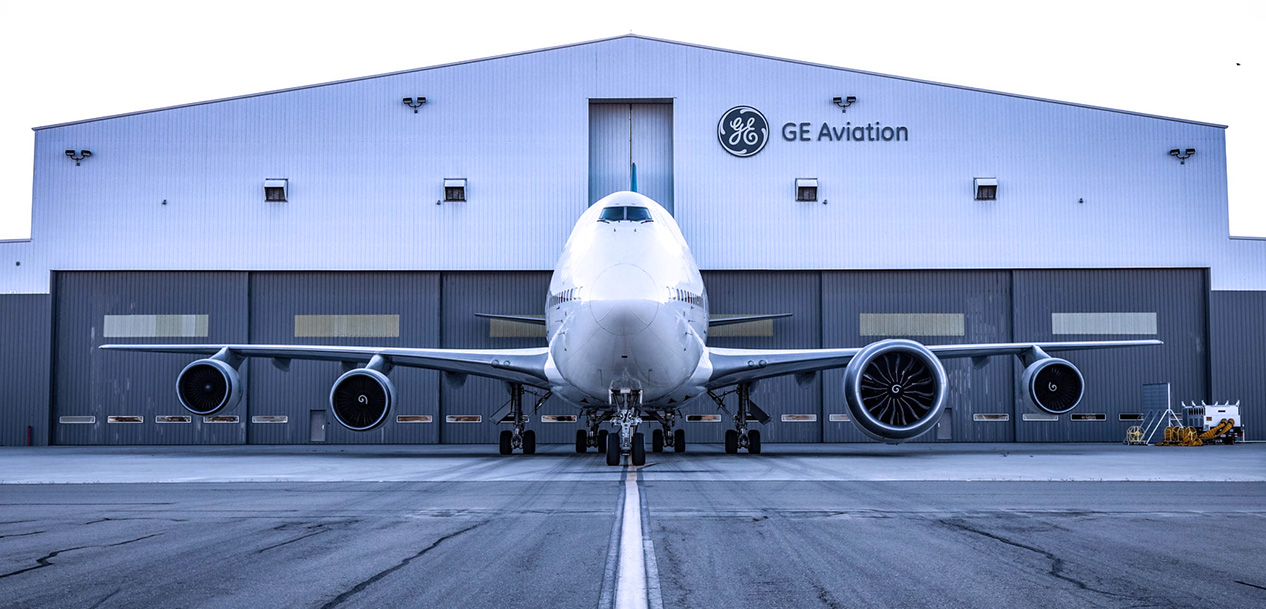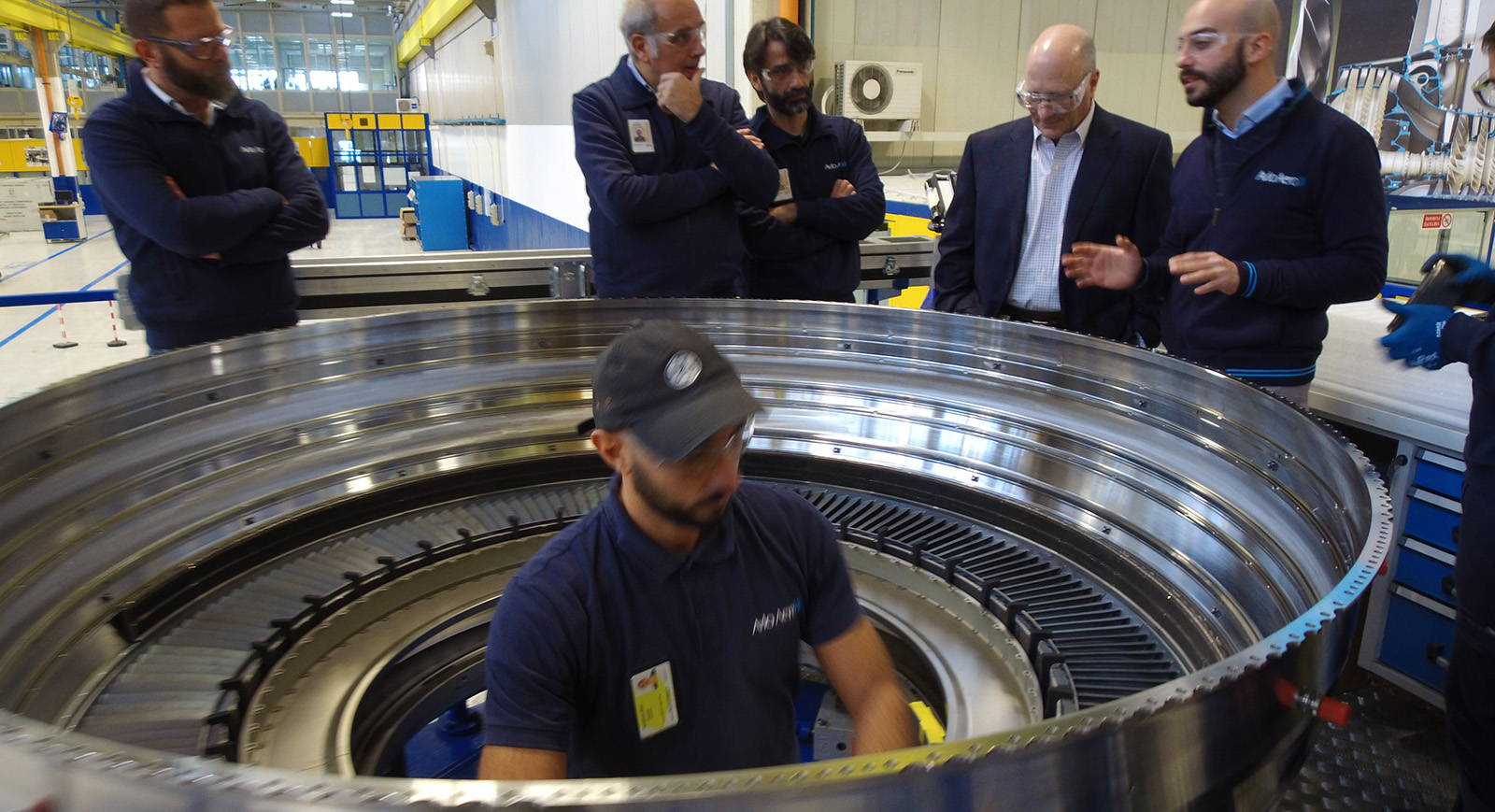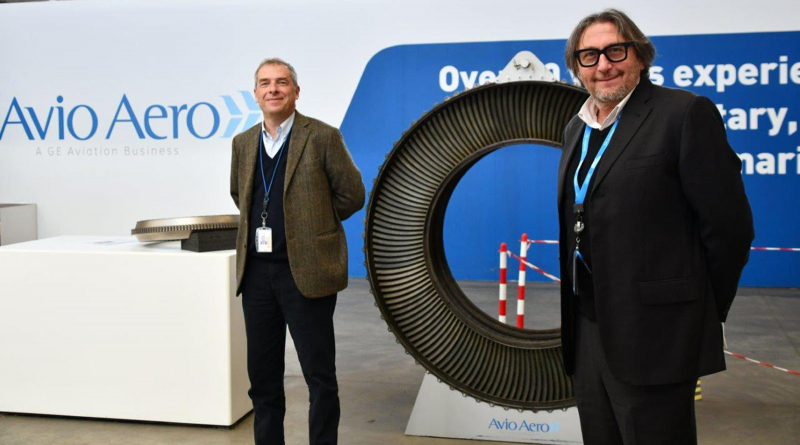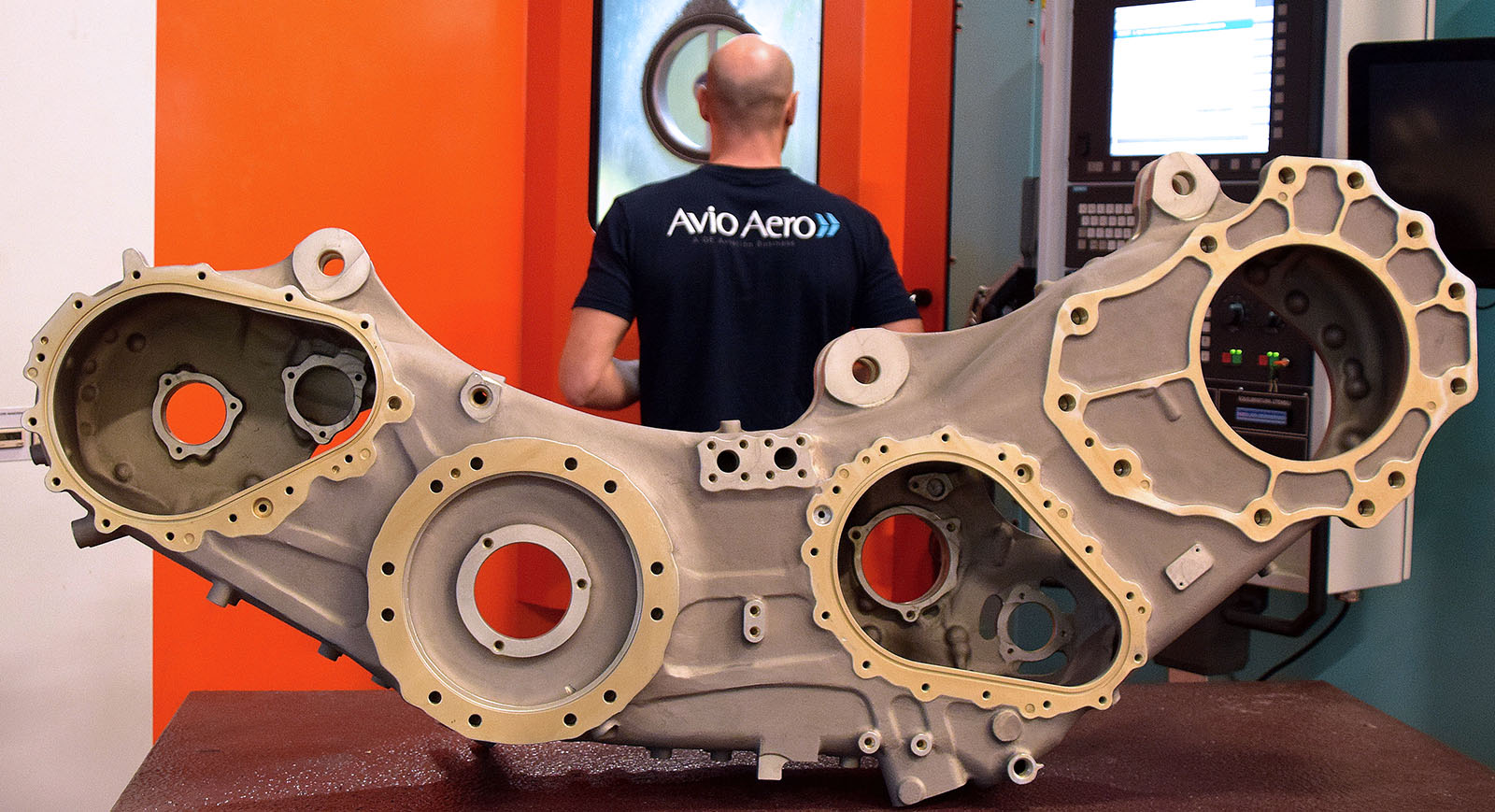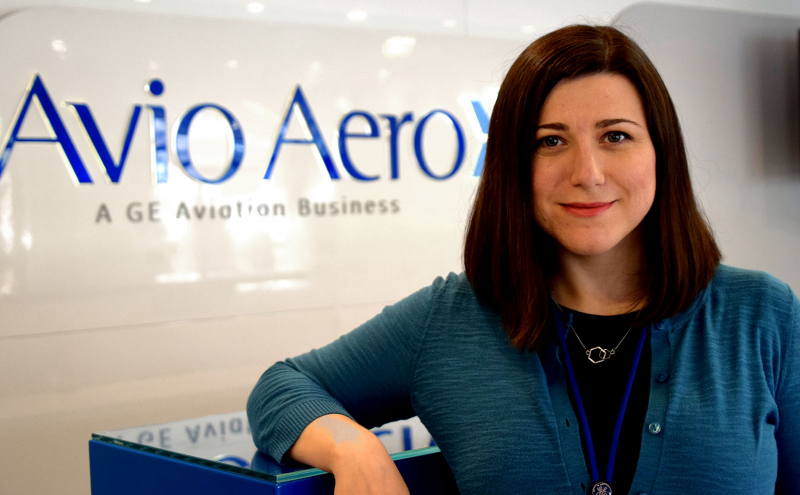Aviation
Nine years, nine engines, one great achievement
Certification of the GE9X, the record-breaking engine that took the contribution of every single Avio Aero site and hundreds of professionals to make, is a milestone marking the dawn of a new technological era.
Oct 2020
September 25th will remain a memorable day for many people. The day that the GE9X, the biggest and most powerful civil aircraft engine ever to be built, received certification from the US Federal Aviation Administration (FAA). This is the step before the engine enters into service, giving it the regulatory and flight safety go-ahead.
This result might perhaps seem predictable, taken for granted even, but only if you don't take into account the time within which it has been achieved and almost a decade of work behind a powerplant that has never been made before. The GE9X will power the new Boeing 777X, capable of carrying up to 425 passengers with 10% greater fuel efficiency (thus emission reduction) than the predecessor GE90 and 5% greater than engines in the same power class.
“I believe that for the era we’re living in today, this milestone represents much more than a corporate milestone: it’s a memorable date for the entire industry”, says Maria Giuseppina Motta, GE9X Program Director for Avio Aero. “Operational efficiency, reduced noise and emissions, state-of-the-art materials and technologies. Just nine years ago, the first turbine design was created. In the meantime, the world has changed a lot, but the exceptional team of highly specialized people scattered across three continents never lost sight of the goal and the prospect of success from the very first day.”
Since the beginning in 2012, Avio Aero was designated module owner of the low-pressure turbine by GE Aviation. “At that time, about ten years ago, we weren’t yet integrated with GE and we set up our technology roadmap (TMP, Technology Maturation Program), finalizing both the development of technologies for which R&D was already underway, such as aerodynamics, and new technologies that were in their infancy, such as blades made of TiAl produced using additive manufacturing,” says Sergio Salvano, Executive Leader of Avio Aero Engineering for NPI (new product introduction) Modules and Components in GE programs.
In the turbine sector, Avio Aero is a leading player in the design and production of 5th and 6th-stage titanium aluminum rotor blades, 3D-printed at the futuristic Cameri site and finished at the Pomigliano d'Arco plant. This is where the nerve center of the low-pressure turbine is found, combining parts from Safran, MTU, and IHI (based in France, Germany, and Japan, respectively) assembled in the module, which then travels from Pomigliano to the parent company to complete the engine.
“From the beginning, the LPT (low-pressure turbine, ed.) module came with its own mantra: the highest level of efficiency”, says Salvano. In his 35th year with the company and having facilitated numerous transformations, Salvano is now a point of contact for hundreds of engineers at Avio Aero and GE Aviation. Back in 1990, he became Team Leader of the then Fiat Avio in Cincinnati for the extraordinary GE90, kickstarting a career of design responsibility that has influenced the most famous civil air transport engines. “This time, our turbine had to aim for an efficiency target of 94.5%, far higher than the GE90 or the GEnx.”
To the impressive engineering team of around 150 engineers distributed around the globe (EDC Warsaw and BEC Bangalore worked alongside Avio Aero) were added as many engineers, technicians, and manufacturing specialists. In addition to the sites mentioned above, the stator blades of the low-pressure turbine are produced in Bielsko Biała (Poland), the huge case enclosing the turbine is produced in Brindisi, and the production of the largest turbine disk, the 6th-stage disk, and other accessory parts takes place at the central plant in Rivalta. The Turin site, meanwhile, is responsible for design and production of the entire accessory drive train (ADT).
"From the beginning, the LPT module came with its own mantra: the highest level of efficiency... This was the very first program that involved practically all our sites, including the Borgaretto foundry and the Sangone test center"
Francesco Maciariello, the Advanced Manufacturing Engineering Leader with 26 years of design experience who has led the Supply Chain for the GE9X for the past four years, is based in Rivalta. “It was the first program that involved practically all our sites, including the Borgaretto foundry and the Sangone test center. The development and implementation of the GE9X parts has seen integration of a number of Italian and foreign suppliers, and therefore colleagues at GE Aviation. Undoubtedly, coordinating such a vast international and cross-functional supply network has been a very complex and unprecedented challenge, but the greatest satisfaction lies in having succeeded in one of the most ambitious projects in the recent history of civil aviation,” says Maciariello.
During the certification process, the testing phase was very intense and decisive, also involving specialists in industrial processes at various plants. Suffice to say that the tests, starting from the first engine test (the early-FETT, in March 2016) were conducted at several high-technology facilities located in Europe and North America: for Avio Aero, in addition to Sangone, there was also the Cold Flow in Zielonka (just outside Warsaw). Nine engines in total (and as many turbine modules and ADT) completed 5,000 hours and 8,000 cycles, with 3,000 simulated takeoffs and landings.
The engineering team was responsible for coordinating each test and, as Salvano explains, “You could even write a book about testing the phenomenal engine that has achieved the world record for thrust power (134,300 pounds, the Soyuz that took Yuri Gagarin to the Moon generated 188,000), but let's simply say that in the NPI process there are a number of phases of pure design (conceptual, preliminary and detailed), and just as many phases of rigorous tests... the engine is subjected to the most arduous tests.”
“The exceptional thing is that for the GE9X we were able to run the FETT (First Engine to Test, ed.) in advance, so that any obstacles or difficulties could be identified in good time. Almost a year passed between the first and second engine tested: precious time to apply all the learning and make the necessary adjustments. For the engineers, it was tantamount to redesigning the GE9X!”
There were of course obstacles and hindrances to such an undertaking, but these were tackled with positive energy and determination to reach a level of zero defects. “Thinking about it, the time taken to overcome each phase was very little in relation to the technological complexity and commitment required. In August 2013, we went from being GE's external partners to being part of the same family, which certainly came with the advantage of synergy, but at the same time it came with very stringent expectations and needs. It was like jumping from a high-speed train onto a rocket: new rules and systems, and a precise timetable to be followed, all while introducing totally new innovations into aeronautics, such as blades made using additive manufacturing and the ETS (engine turning system, ed.).”
The technologies contained in the GE9X, from the 4th-generation composite fan blades through to the entire engine, are of the highest level and make it not only very powerful and efficient but also the quietest engine ever produced by GE. Avio Aero's innovative contribution encompassed the aerodynamics (flawlessly combined with the LPT mechanical integration), the 3D-printed turbine blades (which weigh 50% less than traditional blades) and excellent performance and reliability for the accessory drive train.
"The GE9X is just the arrival point of the forefront and diversified lineage of engines: it closes a 10 years’ circle of strong technical experience and commercial success"
What makes the innovation truly exclusive is the ETS mentioned by Salvano, “a system that didn’t exist before and that meets a specific Boeing requirement in that it allows the time between flights to be minimized. It kicks in at landing, keeping the engine rotating intermittently at 1 round per minute, so that it can be restarted in a stable condition, allowing immediate take off again.”
To date, the GE9X, despite the global crisis, has accumulated orders and options for more than 600 engines. This is due to investment in research and innovation that, according to Maria Giuseppina Motta, “position the GE9X as just the arrival point of the forefront and diversified lineage of engines: it closes a 10 years’ circle of strong technical experience and commercial success.”
A circle that has represented a huge chunk of Sergio Salvano’s professional life. “I’ve worked on the turbine for a lifetime, and this is the greatest satisfaction of my career; the culmination of a journey that began in 1990 in Cincinnati. One continuous parable of growth and learning, sometimes slower than others, but always ready to pick up the pace with determination, aspiring to the next challenging goal.”
Cover photo credits, Rob Butler for GE Aviation ©


